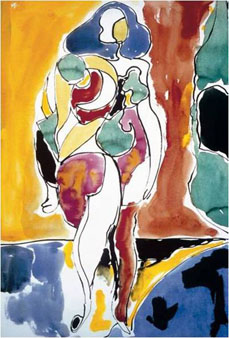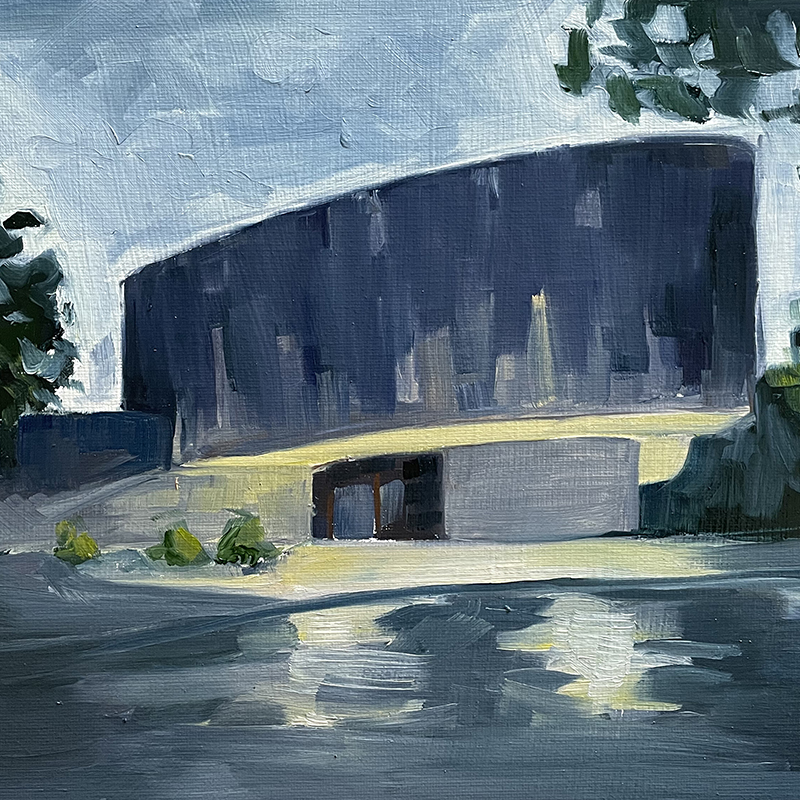Henry Meloy Collection and Archive

Henry Meloy, Untitled, watercolor,
ink on paper, late 1940s,
On Permanent Loan from the
Henry Meloy Educational Trust
On Permanent Loan from the Henry Meloy Educational Trust
Henry Meloy (American, 1902-1951)
Henry Meloy was born in Townsend, Montana, in 1902, but spent most of his career in New York City. He enrolled at the Chicago Art Institute in 1923 to pursue painting and drawing. In 1926 he moved to New York City to continue his studies at the National Academy of Arts with artist Robert Henri. In 1927, he transferred to the Art Students League, graduating in 1929 after working primarily with John Carroll.
Over the next ten years, Meloy taught private art lessons, obtained work as an illustrator and worked on several commissions for the Works Progress Administration and the Public Works Administration. His work in the 1930s and 1940s reflects this time period in style and character, as well as influences of the American Ashcan School and Abstract Expressionism. While in New York City, he associated with artists in the East Village, including Willem DeKooning, Jackson Pollock, Alexander Calder, George Grosz and Frank Mechau.
In the fall of 1940, he was hired at Columbia University to teach painting and drawing. During this time, Meloy traveled to Montana and collaborated with his brother, Peter, who would help found the Archie Bray Foundation for the Ceramic Arts in 1951. Peter, a ceramic artist, threw the pots while Henry applied designs to ceramic chargers and vessels, many of which are in the collection of the Holter Museum of Art, Helena. Meloy continued teaching at Columbia over the course of the next decade until his untimely death in 1951 at age 49. His work is included in the permanent collections of the Metropolitan Museum of Art and the Brooklyn Museum of Art.
The Montana Museum of Art & Culture holds watercolors, drawings, sketches, and sculpture by Meloy on permanent loan from the Henry Meloy Educational Trust.
